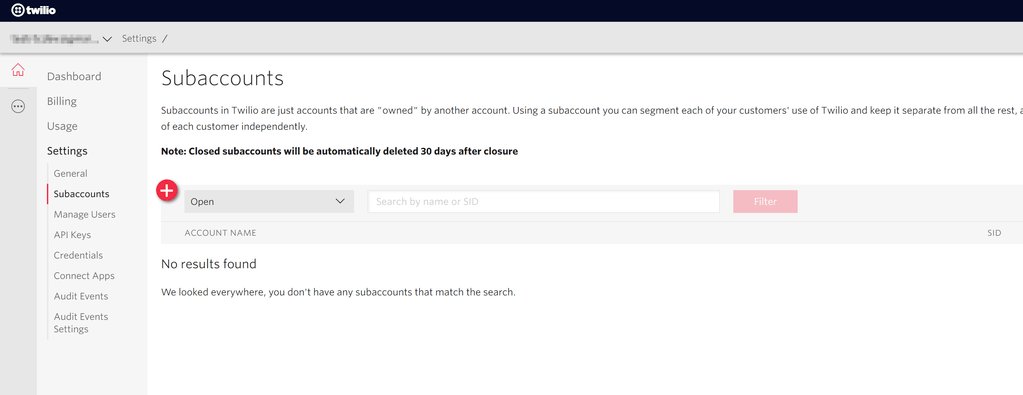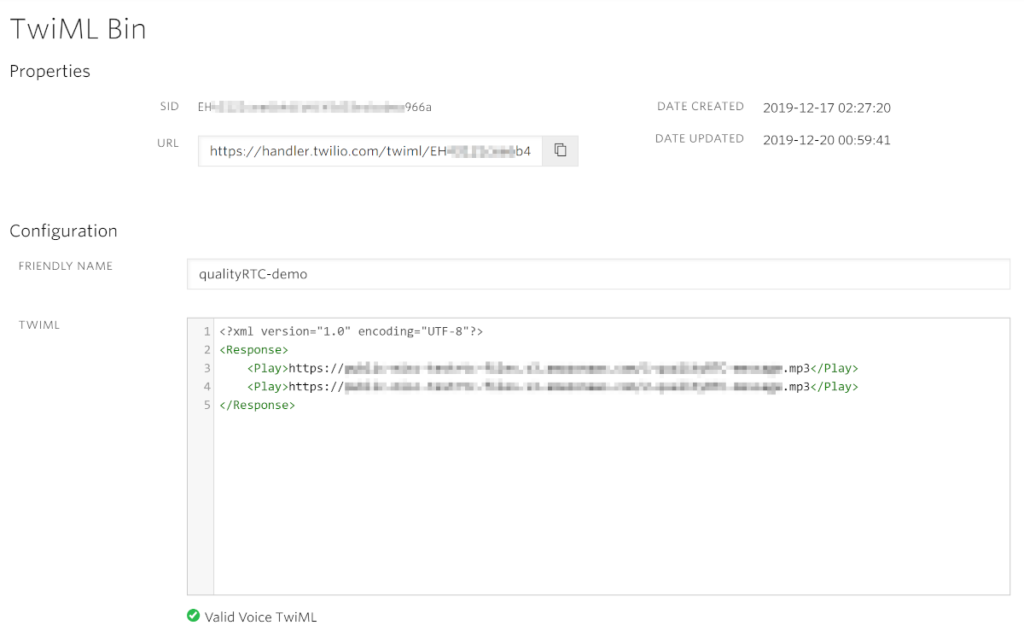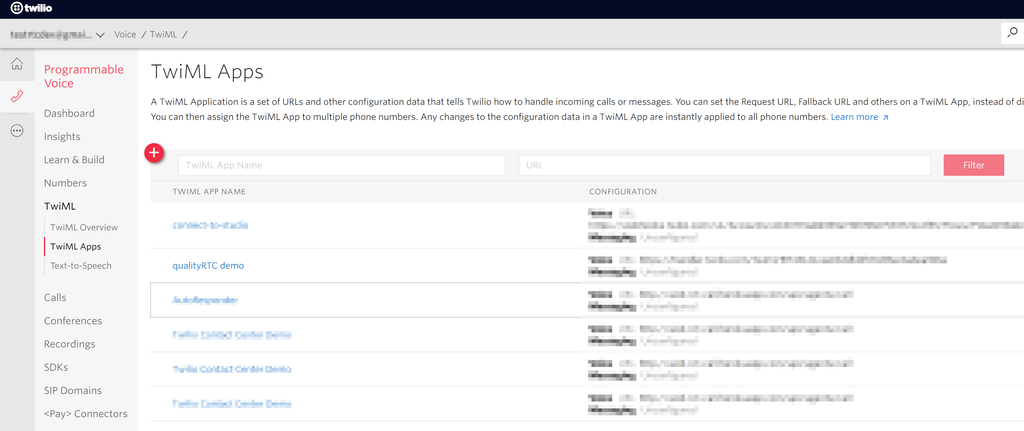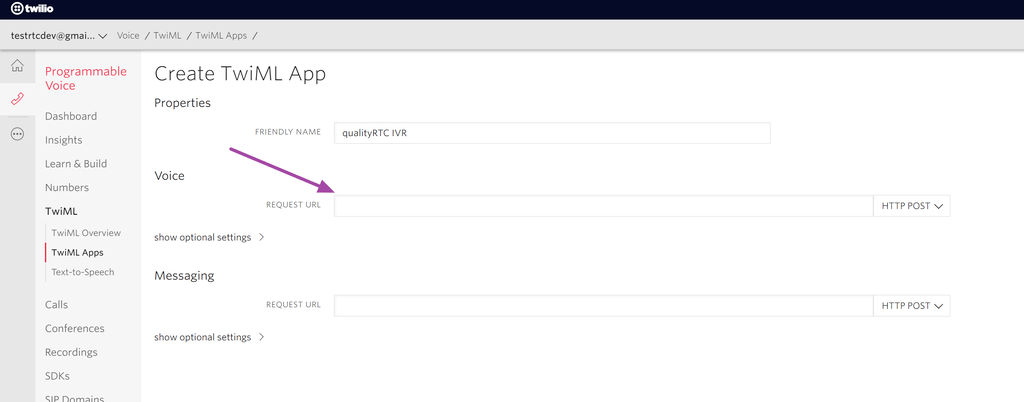If you are using qualityRTC with a Twilio infrastructure and would like to have more control over the announcement played during the Call Quality test, then one approach is using Twilio TwiML Bin (another approach is using Twilio Studio).
Here are a few steps to creating and connecting a Twilio TwiML Bin to qualityRTC:
1. Create a Twilio subaccount
We suggest the creation of a subaccount in Twilio.
In order to connect your account to qualityRTC, you will need to supply us with your Account SID and Auth Token.
To keep your data and credentials secure, it is best if you create a subaccount to manage all qualityRTC related traffic separate from your production system.
To create a subaccount, go to Settings | Subaccounts and click the plus button:

Once created, write down the subaccount’s Account SID and Auth Token and make sure to create the TwiML App within that subaccount.
Note:
We also support Twilio’s API key authentication mechanisms as well as the Auth Token mechanism. If your security practices may include periodic Auth token regeneration, it would be preferable to provide us with the API key and secret instead.
2. Create a TwiML Bin
qualityRTC requires an Application SID, which is a TwiML App.
What we want to do now is create a TwiML App that is based on a TwiML Bin.
Go to the TwiML Bin console and create a new TwiML Bin. Here’s how our own sample TwiML Bin looks like:

Once created, copy the URL from the TwiML Bin properties. We will need this when setting up the TwiML App.
Make the TwiML recording that is played back by the IVR run for 15-30 seconds.
3. Create a TwiML App
Time to create our TwiML App. This is what will give us the Application SID that qualityRTC requires in the case of a Twilio integration.
In the Twilio dashboard, go to Programmable Voice | TwiML | TwiML Apps to create the TwiML App:

Click the red plus button to create a new TwiML App. Give it a name and paste the TwiML Bin URL in the Voice REQUEST URL field:

Once created, click back on that TwiML App to see its Application SID:

Copy the Application SID – you will need it for the next and final step.
4. Information we need
To setup the custom IVR properly, please send us the following information:
Using Auth Token mechanism:
- Account SID
- Auth Token
- Application SID
Using API key mechanism:
- Account SID
- Key SID
- Key secret
Once configured, you will be able to modify the Twilio Studio Flow at any point in time.
